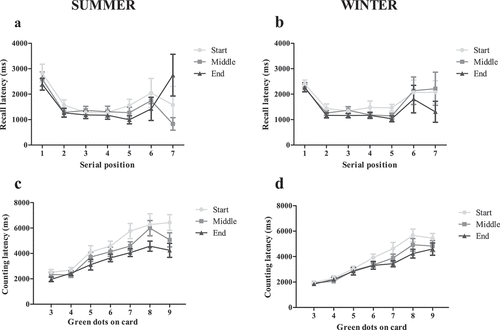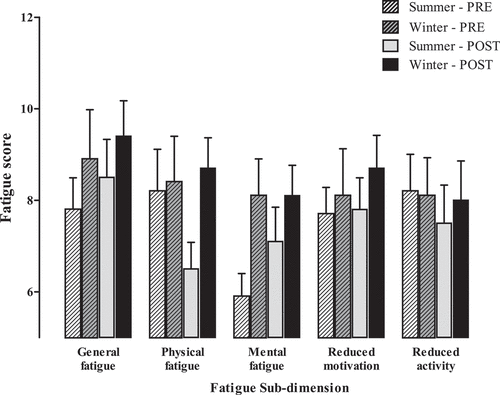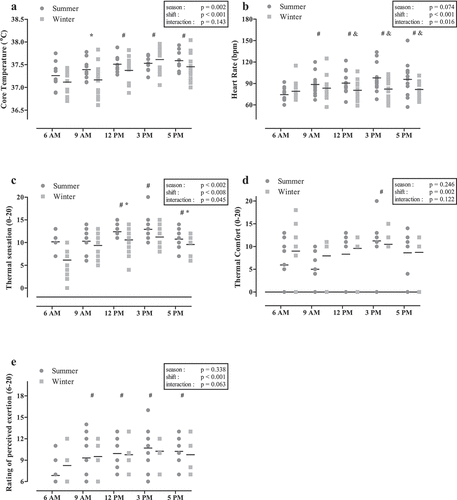Figures & data
Table 1. Demographic and anthropometric characteristics of participants recruited for the Summer and Winter seasons.
Figure 1. Mean response latencies in the counting span task over the duration of a shift (start (6 am), middle (12 pm) and end (5 pm)). Recall latencies across serial positions (A & B) and counting latencies across number of green dots (C & D) in summer (n=13) and winter (n=14) over the course of a shift. Recall latency did not significantly differ (p>0.05) between seasons or over the course of a shift, however first recall latency (serial position 1) was significantly greater than subsequent recall latency (serial positions 2–7; note that data from positions 6 and 7 are noisy). Irrespective of season, mean counting latency was significantly longer at the start of a shift compared to the middle and end of a shift (p<0.05).

Table 2. Processing speed, working memory and manual dexterity results at the start (6 am), middle (12 pm) and end (5 pm) of shift. Counting correct responses, recall correct responses, counting span score out of 7, and manual dexterity performance for dominant and non-dominant hand (out of 25).
Figure 2. Sub-dimensions of multi-dimensional fatigue scale pre- and post-shift over summer (n = 13) and winter (n = 14).

Figure 3. Core temperature (a); heart-rate (b); thermal sensation (c); thermal comfort (d); and ratings of perceived exertion (e) over the course of a shift in summer and winter seasons.


